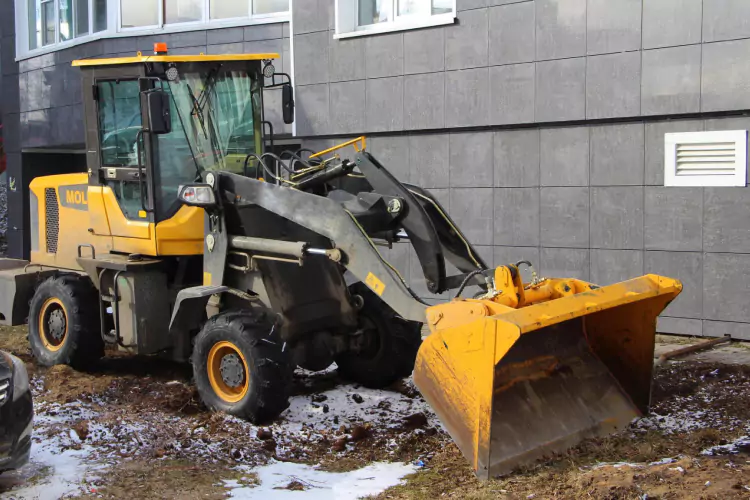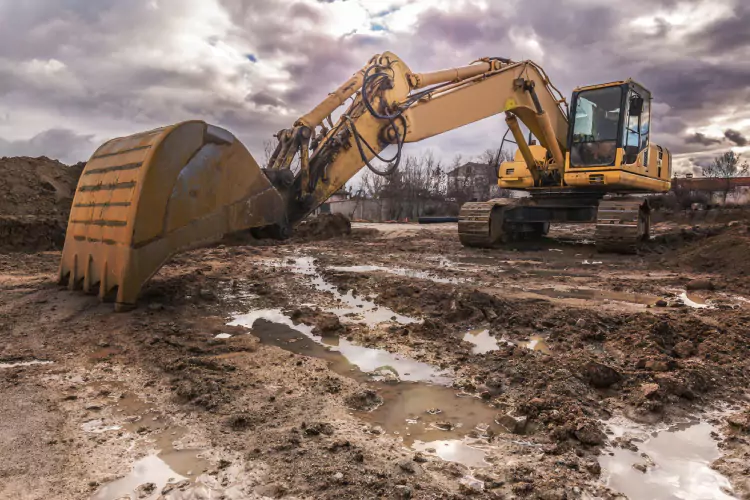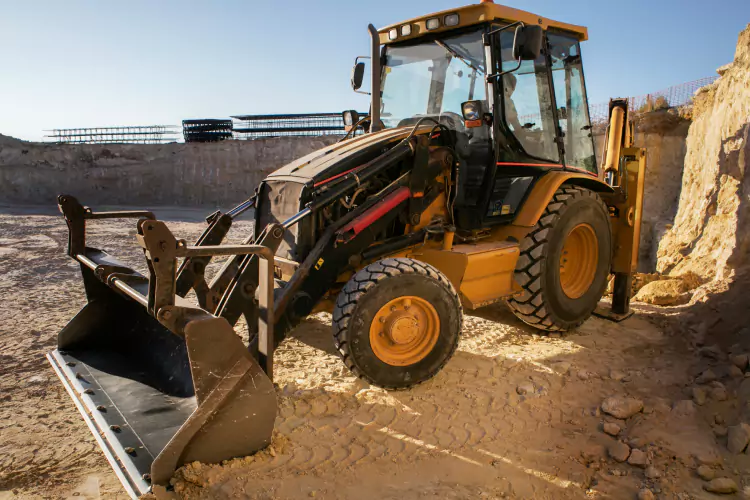The state of California is no stranger to natural disasters, particularly storms and mudslides. With the constant threat of heavy rainfall and mudflows, it is crucial for the state to have the right equipment to deal with these events quickly and efficiently. Earthmoving equipment, such as bulldozers, excavators, and loaders, play a critical role in mitigating the damage caused by these natural disasters. These machines are designed to move huge amounts of earth and debris, allowing emergency response teams to clear roads, rescue people, and restore communities. In this blog, we will explore the importance of earthmoving equipment in California’s storms and mudslides. We will also discuss the different types of equipment and techniques used to manage these events, highlighting the critical role that these machines play in protecting the people and infrastructure of the state.
Introduction to California’s storms and mudslides
California, known for its stunning landscapes and diverse ecosystems, is also plagued by a unique set of challenges when it comes to weather. Now the state experiences a wide range of extreme weather events, including powerful storms and devastating mudslides. These natural disasters can cause significant damage to infrastructure, homes, and lives.
California’s storms are often characterized by heavy rainfall, high winds, and intense thunderstorms. These meteorological phenomena result from a combination of factors, including the state’s geographic location, its proximity to large bodies of water, and the influence of various atmospheric patterns. The Pacific Ocean, in particular, plays a vital role in shaping California’s weather patterns, with storm systems often originating from the ocean and moving inland.
When these storms hit, they can trigger another formidable challenge: mudslides. California’s steep terrain, particularly in regions like the coastal mountains and areas affected by wildfires, is susceptible to soil erosion and landslides during heavy rainfall. The combination of saturated soil, gravity, and the force of rushing water can result in devastating mudslides that can rapidly engulf homes, roads, and entire communities.
Understanding the Impact of Storms and Mudslides
California experiences a wide range of weather patterns, from heavy rains and windstorms to intense thunderstorms and even hurricanes. These storms bring with them torrential downpours, strong winds, and lightning strikes, which can trigger mudslides in susceptible areas. The destructive power of mudslides is truly astonishing. They can devastate everything in their way, including homes, roads, bridges, and vegetation. The sheer force of the debris flow can easily uproot trees, demolish structures, and bury entire neighborhoods under layers of mud and rocks. The speed at which mudslides occur leaves little time for evacuation or rescue efforts, making them particularly dangerous and unpredictable.
In such challenging circumstances, earthmoving equipment plays a crucial role in mitigating the impact of storms and mudslides. Moreover, these equipment are used to restore damaged infrastructure and rebuild communities after the devastation caused by storms and mudslides. From removing debris and restoring utilities to reconstructing roads and bridges, these machines are vital in the recovery process, enabling communities to rebuild and regain a sense of normalcy.
The Role of Earthmoving Equipment in Storms and mudslides
In the face of the unpredictable and often devastating storms and mudslides that frequently plague California, the role of earthmoving equipment becomes paramount in mitigating their effects. During the pre-storm phase, earthmoving equipment is instrumental in fortifying vulnerable areas and minimizing potential damage. This includes tasks such as clearing drainage systems, reinforcing slopes, and creating barriers to redirect water flow. By strategically deploying these machines, construction crews can significantly reduce the risk of mudslides and subsequent property damage.
When storms hit and mudslides become a reality, earthmoving equipment becomes the frontline defense. Bulldozers, excavators, and graders are deployed to swiftly clear debris, open blocked roads, and create diversion channels for water. Furthermore, these machines play an essential role in post-storm recovery. With their ability to handle heavy loads and their versatility in maneuvering, allowing communities to rebuild and recover in a timely manner.
Types of Earthmoving equipment used in storm and mudslide management
The role of earthmoving equipment becomes crucial in managing and mitigating the current situation of California. This equipment serves as the backbone of any effective response and recovery efforts, allowing for efficient clearance of debris, restoration of infrastructure, and the protection of lives and properties.
Various types of earthmoving equipment are employed in these challenging situations to tackle the unique demands of storm and mudslide management.
Excavators
These powerful machines, often referred to as the workhorses of the industry, are designed to handle the toughest of terrains and remove debris with ease. Excavators come in various sizes and configurations. Equipped with a hydraulic arm and bucket, these machines can effectively dig, lift, and carry large quantities of soil, rocks, and debris. Their maneuverability and precision allow operators to navigate through challenging landscapes, ensuring efficient and thorough cleanup operations.
One of the primary tasks of excavators during storm and mudslide cleanup is the removal of fallen trees, rocks, and other debris that obstruct roads, bridges, and drainage systems. These obstructions not only impede emergency response efforts but also pose significant safety risks to both residents and infrastructure. After a storm or mudslide, hillsides may become unstable, increasing the risk of further landslides. Excavators can be used to carefully excavate and regrade the affected areas, ensuring proper drainage and reducing the potential for future erosion.

Bulldozers
When it comes to tackling the aftermath of storms and mudslides in California, bulldozers play a crucial role in shaping the land and clearing debris. Bulldozers are equipped with large and sturdy blades in the front, which are specifically designed to push and move soil, rocks, and other materials. They have the capability to level the ground, creating a smooth surface for further construction and clear the way for emergency vehicles and personnel. This is particularly important in areas where landslides and mudslides have caused significant damage to the terrain.
In addition to leveling the ground, bulldozers are instrumental in clearing debris. Bulldozers can be equipped with additional attachments and accessories to enhance their capabilities. For example, they can be fitted with rippers, which are sharp metal teeth that penetrate the ground to break up hard surfaces or loosen compacted soil. This is particularly useful when dealing with hardened mud or debris that requires extra force to remove. Their steadfastness and power make them an essential tool in shaping the land and clearing the path for recovery.
Backhoes
Backhoes play a crucial role in the cleanup and recovery efforts. These versatile machines are equipped with a digging bucket on the back and a loader bucket on the front, making them ideal for a wide range of tasks.
- Efficient excavation: Backhoes are capable of quickly and effectively digging through debris, mud, and soil, enabling emergency personnel to access affected areas during storm and mudslide situations.
- Slope stabilization: Backhoes play a crucial role in clearing and stabilizing slopes and embankments after heavy rains, reducing the risk of further landslides and erosion.
- Debris removal and material transportation: Backhoes excel at loading and unloading trucks, making it easier to transport debris and materials away from disaster areas, facilitating the cleanup process and enabling reconstruction efforts to begin promptly.
- Versatility on different terrains: Backhoes are adaptable to various terrains, making them suitable for different disaster scenarios and ensuring efficient operations.
Dump trucks
When a storm hits, the landscape can be left in chaos. Debris, rocks, and mud can quickly accumulate, blocking roads and posing a significant threat to communities. This is where dump trucks become indispensable.
These trucks, equipped with large and durable beds, enable the efficient removal and disposal of debris, preventing further blockages and ensuring the restoration of vital infrastructure. With their powerful engines and rugged construction, they can navigate through muddy and debris-filled areas, ensuring the smooth transportation of essential supplies and the removal of hazardous materials.
Skid steer loader
Another essential piece of equipment is the skid steer loader, known for its compact size and agility. Skid steers can access tight spaces and operate in confined areas, making them ideal for work in urban environments affected by storms and mudslides. With their interchangeable attachments, such as buckets and grapples, skid steers can handle a variety of tasks, including debris removal and land grading.
Wheel loaders
Wheel loaders are also commonly utilized in storm and mudslide management. These machines excel at scooping and loading large quantities of debris into trucks for efficient disposal. Their robust construction and heavy lifting capacity enable them to handle the demanding workload associated with disaster response and recovery operations.
In general, the types of earthmoving equipment used in storm and mudslide management are diverse and purpose-built. From excavators and bulldozers to skid steer loaders, wheel loaders, and dump trucks, each machine serves a specific function in the collective effort to tame the elements and restore safety and normalcy to storm and mudslide-affected areas. Without these earthmoving giants, the task of restoring safety and normalcy to affected areas would be significantly more challenging and time-consuming.
The expertise behind operating Earthmoving equipment
Operating Earthmoving equipment requires a unique set of skills and expertise. In the face of California’s frequent storms and mudslides, it is crucial to have professionals who possess the knowledge and experience to tame the elements effectively. These skilled operators understand the intricacies of various earthmoving machinery. They are well-versed in the technical aspects of operating these powerful equipment, such as navigating challenging terrains, managing different soil types, and adhering to safety protocols. They can quickly adapt to changing conditions on the ground, making on-the-spot decisions to ensure the safety of themselves, their team, and the surrounding environment.
In addition to their technical and environmental knowledge, these operators also possess essential communication and teamwork skills. They work closely with other professionals involved in disaster response and recovery efforts, such as geologists, engineers, and emergency personnel.
Renting Earthmoving Equipments during a natural disaster
Renting earthmoving equipment during a natural disaster is crucial for effective response and recovery. By partnering with reputable providers, communities can enhance resilience and expedite the path to rebuilding. Renting earthmoving equipment from National Dispatching provides peace of mind, efficiency, and support in tackling the challenges presented by such events. It allows organizations and authorities to focus on the task at hand without worrying about equipment reliability or logistics.


